Andrew M. Fischer
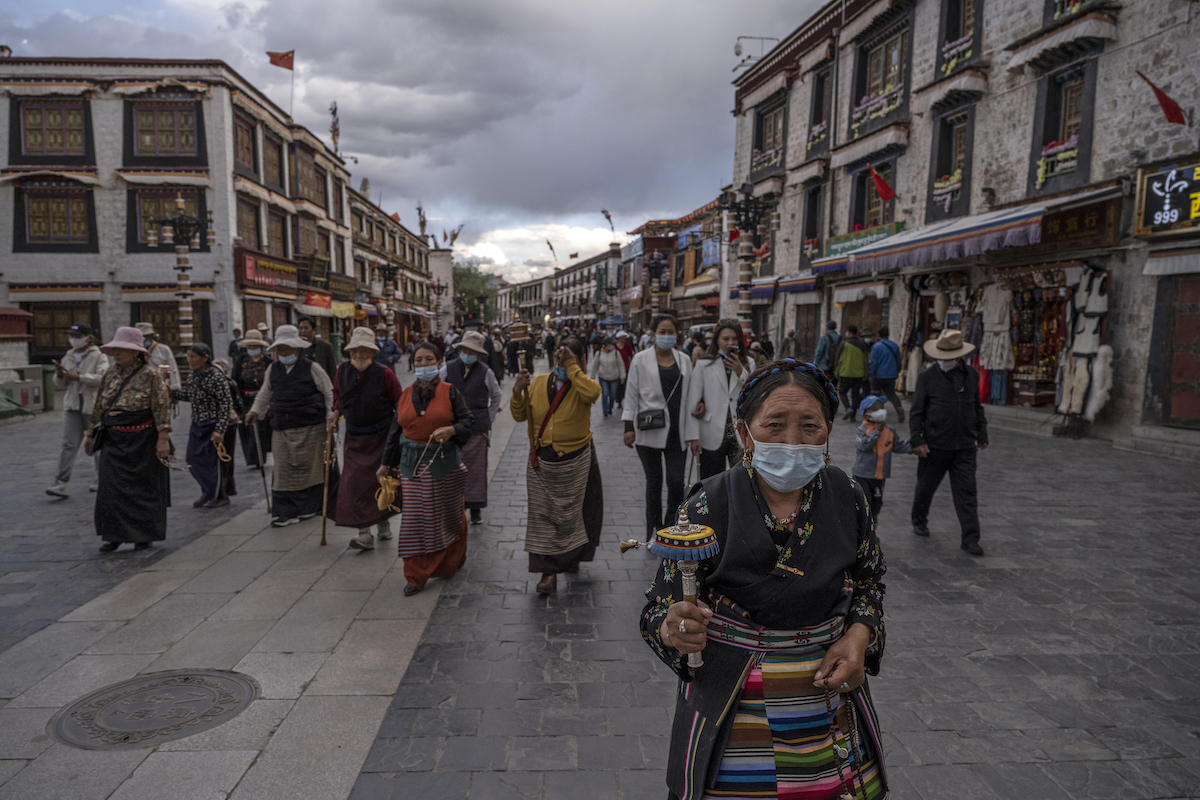
Over the past year, government and non-governmental bodies around the world have focused attention on the ethnic demography of China’s far-western region of Tibet, often lumping it together with Xinjiang. On April 7, 2021, in its “List of issues in relation to the third periodic report of China,” the UN Committee on Economic, Social and Cultural Rights requested that China “provide information on the trend in the demographic composition in the Xinjiang Uighur and Tibet Autonomous Regions [TAR] over the past five years.” The United States Department of State’s recent 2020 Tibet human rights report mentions “reports of coerced abortions and sterilizations” in Tibet, and suggests that development projects “contributed to the considerable influx of Han Chinese into the TAR and other Tibetan areas.” The 2021 “Freedom in the World” report of U.S.-based Freedom House asserts (as it has since 2017 when it started to include “Tibet” as a territory in its reports): “State policies, including incentives for non-Tibetan people to migrate from other parts of China and the relocation of ethnic Tibetans, have reduced the ethnic Tibetan share of the population.”
The elevation of these statements to the upper echelons of international diplomacy, amidst the wider theater of mounting tensions between the U.S. and China and parallel concerns about Beijing’s policies towards Uyghurs and other ethnic groups in Xinjiang, draws from the speculation that Beijing is engaging in a policy of what is sometimes called demographic “swamping.” The idea of swamping, which the Dalai Lama himself elaborated in 2008, holds that China’s government has been seeking to solve its problems in Tibet and other “ethnic minority” areas such as Xinjiang by turning local indigenous ethnic groups (such as Tibetans or Uyghurs) into minorities in their own land through a coordinated program of Han Chinese in-migration, like settler colonialism in the Americas or Australasia. Exiles and their supporters often present this as part of a “cultural genocide” currently taking place in Tibet, together with other state policies of assimilation, cultural and linguistic repression, and alleged discrimination. These claims in turn regularly appear in the international press.
China’s 2020 National Population Census, the seventh since the founding of the People’s Republic of China (PRC) in 1949, allows us to assess the concerns about ethnic population shares. (Concerns about assimilation and cultural repression require a separate and equally nuanced discussion.) This has only just been made possible as census results have been slowly released through a series of central, provincial, and prefectural communiqués—Qinghai province, for instance, released a communiqué on June 16 that announced select findings of the census, and some prefectures have released communiqués on census findings as recently as July 30.
Although the data in these communiqués are limited (and although census errors are common, even in the U.S. and other high-income countries), they nevertheless provide the most accurate information to date on questions of aggregate population. Moreover, the censuses are the only credible source of data on ethnic compositions. Official population estimates made between censuses are generally inaccurate, leading to unofficial estimates or guesswork, or just outright skepticism, often founded on a misunderstanding of how population data are collected or calculated. The census resets the baseline every 10 years and provides by far the most accurate data available to everyone, including the government. And while we wait for the detailed census data to be released (in 2010 it took over two years), it is worthwhile to use the communiqués to make a preliminary evaluation of whether indeed swamping is taking place.
My research on the census data shows two opposing trends at play: First, the Han Chinese population share in the Tibet Autonomous Region (TAR) is increasing, but from a small base and remaining a small minority. More specifically, this increase is concentrated in Lhasa and several militarized prefectures involved in ongoing border conflicts with India. Second, the Han population share is decreasing or remaining stable in Tibetan areas outside the TAR, which account for about half of the Tibetan population in China. In these areas, declining Han shares are characterized by Han depopulation, that is, falling numbers of Han people due to strong outmigration.
There is no question Beijing has encouraged Han people to migrate to Tibetan areas. However, the government presents this as a matter of assisting local development by rectifying what it perceives as insufficient local human resources to enact development plans, particularly given the tendency for skilled labor to migrate out of these regions—a problem that is endemic in remote rural regions around the world. Beijing also claims to have supported the development of local culture rather than eradicating it.
This narrative does not necessarily exonerate the government of the possibility of covert strategies of swamping that it might pursue under the cover of its propaganda. Still, previous attempts at orchestrating large-scale Han in-migration in the 1950s and 1960s generally failed in Tibetan areas, and at the beginning of the reform period in the 1980s many Han, especially cadres and skilled workers, left the region as restrictions on population mobility loosened for the first time in decades. Hence, it was only with the resuscitation of western development strategies from the 1990s onwards that the prospect of net Han in-migration returned, especially with the successive intensification of these strategies in the 2000s and 2010s.
Such Han migration to the TAR has been bolstered by massive economic subsidies from the central government, which exceeded 100 percent of the TAR GDP from 2010 onwards. These encourage migration indirectly through the economic opportunities that they generate for those who can access these opportunities, which are prejudiced in favor of migrants with Chinese fluency and related attributes. However, the prevailing tendency in the less intensively subsidized Tibetan areas outside of the TAR appears to be outmigration rather than in-migration. This outmigration is stronger among Han than among Tibetans, and higher birth rates among Tibetans also compensate for their own emigration. The government might have the intention to reverse this (we can only speculate), but regardless, such structural tendencies are often out of its control, as they are elsewhere in the world.
This corrective notwithstanding, Han migration to Tibetan areas is hardly without consequence. Han migration can have strong political and economic effects, especially on urban employment, even if the Han population share is small and/or declining. This is especially the case given that—as confirmed by the census—Tibetans continue to face high levels of illiteracy and much lower levels of schooling than Han, which puts them at a severe disadvantage in competing for urban jobs.
However, this nuance is muddled by attempts to present Tibet in a black and white manner. Recent reports suggesting that government vocational training and employment programs in the TAR constitute a “draconian scheme” of coerced labor with “close similarities” to the system in Xinjiang, for example, run the risk of vilifying government attempts to address—however obtusely—the disadvantages Tibetans face in urban employment. This effectively damns the government if it does, while similarly damning it if it does nothing.
“Tibet” refers to all the officially recognized and indigenous Tibetan areas in China, including both the TAR and the areas outside of it, which together constitute a region about the size of Western Europe (as shown in the map below). “Tibet” is often used to refer to only the Tibet Autonomous Region (the TAR), which only contains about half the officially recognized Tibetan autonomous areas and Tibetan population in China. The TAR is entirely composed of Tibetan areas, whereas the other areas form parts of four other western provinces: most of Qinghai, half of Sichuan, and smaller parts of Gansu and Yunnan. The population in these Tibetan areas is very small relative to the respective provincial populations; most people in each of these provinces live in the lower-altitude, mostly Han, eastern parts. For instance, while the two Tibetan autonomous prefectures of Sichuan comprise about half of the province geographically, they account for only about two percent of Sichuan’s population in the 2020 census of more than 83 million.
Élisabeth Allès and Françoise Robin, ‘Editorial,’ China Perspectives, 2009
This political and administrative setup derives from history. The TAR roughly corresponds to the territory controlled by the Tibetan Government in Lhasa at the time of the PRC invasion (or “Peaceful Liberation”) in 1950. The other areas have different political histories of incorporation, even before the PRC, although they were nonetheless undisputedly Tibetan and to various degrees self-governing; in recognition, the PRC accorded these sub-provincial areas “autonomous” status in the 1950s.
The decline in Han population shares occurred in the three provinces that account for most of these Tibetan areas outside of the TAR (Gansu, Qinghai, and Sichuan). It was stable in Yunnan (where Tibetans account for only a tiny proportion of ethnic minorities). The fall was sharpest in Qinghai—the province with the next highest Tibetan population share and the second-most subsidized province in China after the TAR—where the share also fell faster in the 2010s than in the 2000s (as well as in Gansu to a lesser extent). Indeed, if trends continue, members of groups known as “minorities” will soon become the majority in Qinghai province, where about two thirds are Tibetan or related Tibetan-Buddhist groups such as Mongolians and Mongours (Ch. Tu), and about one third are from various local Muslim groups.
Figure 1: Provincial-Level Changes in Han Population Shares from 2000 to 2020
By contrast, the Han population share increased sharply in the TAR. The increase was also faster in the 2010s than in the 2000s, but from a small base. Han remained a minority, reaching just above 12 percent of the population in 2020 (up from 6 percent in 2000 and 8 percent in 2010). As shown in Figure 1, the increase in Han share and its acceleration in the 2010s was similar only to Xinjiang, but not to any of the other provinces containing Tibetan areas.
Differences in population growth underlie these trends, as shown in Table 1 below. The TAR population, like that of Xinjiang further west, grew rapidly during the 2010s at close to two percent a year (a rate at which the population would double in roughly 35 years). This growth came through a combination of net in-migration and relatively high natural population increase rates (NPIRs; “natural increase” is the demographic term for births minus deaths in a given year, and hence the change in population without migration, whereas “population growth” includes natural increase and net migration).
In contrast, the provinces with Tibetan areas outside of the TAR saw either stagnant or declining populations due to net outmigration. This is best exemplified by Gansu, the poorest province in China in terms of per capita GDP in 2019, where the population declined by 2.2 percent between the 2010 and 2020 censuses despite a positive natural increase rate. The stagnation or decline in these provinces occurred mostly among the Han population.
Table 1: Population Change and Han/Minority Shares in Five Provinces with Tibetan Areas (and Xinjiang for Comparison)
These data also reflect that natural increase rates were higher among indigenous “minorities.” Tibetans (like Uyghurs) have generally had higher birth rates because the one-child policy was never imposed on minorities, especially in rural areas. It was instead effectively a two- or three-child policy, or simply not implemented at all in some remote areas until recently.
Tibetans also migrated out of Tibetan areas, although less so than the Han in these areas, and their outmigration continues to be compensated by higher natural increase rates. Han migrants in Tibetan areas, on the other hand, typically have very low birth rates and hence their population changes are mostly determined by net migration.
We need to look beneath these provincial aggregates to assess whether Han shares increased in the Tibetan prefectures outside of the TAR even while they were falling at the provincial level (given that, as noted above, the Han majorities of these provinces mostly reside outside of the Tibetan areas). The provincial aggregates could disguise churning of population movements within provinces, not only of Han migrants coming to Tibetan areas but also Tibetans moving into Han areas. For instance, if large numbers of minorities migrate to the capital city of their province, as has become increasingly common, then their population share might increase at the provincial level even while falling in their respective prefectures. Indeed, encouraging Tibetans to migrate outside of Tibetan areas could be considered an assimilationist strategy, even if this is not precisely swamping.
While prefecture- and county-level data on ethnic shares are limited, the data that are available for Qinghai indicate that this is not the case. Han shares either fell in prefectures where Han shares are higher, or they increased very slightly in prefectures with very low Han shares. Interestingly, Han shares also fell in Haidong and Xining cities (not shown). While these are technically not Tibetan autonomous areas, they are home to substantial populations of Tibetans, Muslims, and other minorities. The increase in the minority share of Xining reflects the migration of minorities to this capital city.
Table 2: Selected Population Data from the Nine Tibetan Autonomous Prefectures outside the Tibet Autonomous Region (TAR)
For instance, the strongest population growth among all the Tibetan prefectures outside of the TAR occurred in the two most remote prefectures in Qinghai, namely Guoluo (Tib. Golok) and Yushu, both of which were mostly Tibetan in 2010. Their high proportions of population aged 0-14 years old were also among the highest in China in 2020. This indicates that their population growth rates were mostly driven by relatively high birth rates among local Tibetans, not from in-migration (because younger population structures result from higher birth rates, whereas Han migrants in Tibetan areas are mostly working age and generally have very low birth rates). There was a small increase in the number of Han, by 3,310 in Golok and 2,324 in Yushu, most likely from in-migration. Because the Han population was already so small in these prefectures, combined with out-migration of Tibetans, this resulted in a slight increase in the Han population share. A similar result occurred in Huangnan (Tib. Malho) prefecture.
Meanwhile, the less remote prefectures that border Han areas and that have lower minority shares and older population structures exhibited low or negative population growth. This was mostly due to strong net out-migration of Han. For instance, the increase in the minority share of the population in Haibei, Hainan, and Haixi prefectures in Qinghai was driven by Han depopulation (this was also the case of Haidong city mentioned above). The number of Han people fell between 2010 and 2020 by 8 percent in Haidong, 11 percent in Haibei, 9 percent in Hainan, and 14 percent in Haixi. The number of minorities increased by less than would be predicted by natural increase rates, also indicating outmigration, although their populations increased nevertheless.
The exodus of Han from Haixi Mongolian and Tibetan Autonomous Prefecture provides a telling example about how, despite past predictions of swamping, the government has struggled to retain Han migrants in many of these remote rural Tibetan areas outside of the TAR. This arid and sparsely populated prefecture came under the international spotlight in the late 1990s when a campaign led by Tibet support groups alleged that the World Bank was supporting government policies of population transfer and ethnic dilution through what was called the “Qinghai Project.” The project was part of a broader set of government poverty reduction and western development strategies that started in the mid-1990s. It aimed to resettle 57,775 farmers from Haidong in northeastern Qinghai to a new irrigation project in Haixi. The government withdrew its loan application to the World Bank following the campaign and proceeded with the project using its own resources. The prefecture was also the locus of development projects in the 2000s given that Golmud, the second largest city in Qinghai and the center of the prefecture’s mining industry, served as the logistical hub for the construction of the first railway to Lhasa in the TAR. Together with increasing mining, petroleum, and natural gas exploitation, population swamping seemed a fait accompli. Despite its exceptional circumstances, it was taken to be a warning of things to come in other Tibetan areas.
Haixi was indeed the strongest case of swamping across all the Tibetan areas up until the 2000s. The population grew from just over 20,000 people in 1953, when it was mostly composed of Tibetans and Mongolians, to 489,338 in 2010, of which 322,997 (66 percent) were Han. Hui accounted for an additional 13 percent of the population in 2010, many of whom had arrived in the 1990s through the Qinghai Project. A Muslim group the government designates as an ethnic minority, Hui are indigenous to Qinghai and Gansu but not specifically to Haixi.
After peaking in the 2010 census, the Han population collapsed between 2010 and 2020 by 45,649 people, a decline of 14 percent. Further research is required to understand this decline, but it illustrates the difficulties of keeping Han migrants in these remote locations beyond specific, heavily subsidized bouts of infrastructure investment or increasingly capital-intensive mining and petroleum exploitation. As Han left in droves, the minority population increased by almost 15 percent, resulting in a sharp increase in the minority share by 6.8 percentage points. While this might be considered an exceptional case given the nature of the local economy, similar dynamics have happened elsewhere, suggesting a broader structural trend.
The 2020 census data by ethnicity are not yet available for the prefectures in Gansu and Sichuan (Gannan, Aba, and Ganzi), although other indirect data (such as the proportion of the population aged 0-14 years old) strongly suggest the same dynamics. At the county-level of these prefectures, population decline is similarly predominant in the lower-altitude counties on the eastern edge of these prefectures that border Han areas (such as Wenchuan county, which was the epicenter of the 2008 earthquake in Sichuan). In these limitrophe counties, minority shares are lower and populations older, and population decline is most likely explained by an exodus of Han people, as in Haixi. In contrast, the more remote counties that are mostly Tibetan and younger generally exhibit strong population growth, as in Guoluo and Yushu. The young age structures suggest that the growth is mostly due to local (Tibetan) birth rates, not to in-migration.
Within the TAR, almost half of the population growth was due to the very rapid growth of Lhasa, which grew by 55 percent over the past decade, after roughly doubling in the 2000s (see Table 3). This was clearly due to strong in-migration, including Tibetans migrating from other parts of the TAR. Lhasa also accounted for more than half of the increase in the Han population (112,017 out of 198,107 additional Han in the TAR compared to 2010). Nyingchi and Ngari, prefectures at strategic military locations in the ongoing border conflicts with India, also saw rapid growth of over 2 percent a year, and accounted for an additional sixth of the Han increase in the TAR in the 2010s. Lhasa and especially Nyingchi saw a strong increase in the Han population share. Shannan (Tib. Lhoka), which also contains militarized borders, also saw a substantial increase in share, although this is partly explained by strong Tibetan outmigration, probably to neighboring Lhasa.
Table 3: Selected Population Data from the Prefectures in the Tibet Autonomous Region (TAR)
The other three prefectures of the TAR exhibited population growth as would be expected according to the natural increase rates generally observed among rural Tibetans, which are among the highest in China, counterbalanced by some outmigration. Han population shares increased, but more moderately (or barely at all in the case of pastoral Nagqu) and from a small base—like what happened in the more remote prefectures in Qinghai.
In this sense, the TAR exception was more precisely a Lhasa, Nyingchi, and Ngari exception, reflecting massively subsidized geo-strategic priorities. Lhasa is a very important culturally and politically symbolic exception, but it is an exception nonetheless, as the prime urban center of a vast region the size of western Europe that, up until recently, was mostly agrarian.
Even despite doubling over two decades, the low Han share of the TAR in 2020 will still probably be greeted with incredulity by those who allege population swamping. However, it is important to recall that the census was conducted on November 1 (as it was in 2010 and 2000), well after summer when the Han tourist population swells and most journalists and other observers visit.
Moreover, we know from previous censuses that the Han are concentrated in the urbanized core of Lhasa, and very few reside in rural areas. This continues to be reflected in the 2020 census in that 53 percent of the 443,370 (non-military) Han counted in the TAR were in Lhasa. Given that they dominate economic opportunities in Lhasa and other urban centers, this may make them seem more demographically dominant than they are.
In other words, we need to look at the effects of Han migration through the lens of urban employment rather than demographics. The economic and political advantages enjoyed by the region’s Han residents can have outsized effects on employment, even if their overall population numbers are small or declining. This is especially the case given that Tibetans have been urbanizing rapidly over the last 20 years, not simply as a matter of government policy but also from their own initiative, as they leave farming, herding, and rural areas altogether, in search of work in towns and cities. For instance, the increase of 3,310 Han people in Golok is small relative to the prefecture’s population of 215,573 people, but it might be considered large relative to the very limited good quality employment opportunities in the towns of this remote prefecture. Fears of these effects are understandable but must be nuanced, whereas reductive narratives, including recent allegations of coerced or forced labor, muddle these nuances.
The census data also highlight the urban employment predicament facing Tibetans. For instance, the proportion of the population living in urban areas in the TAR increased from 23 percent to 36 percent between 2010 and 2020. More specifically, the rural population in the TAR barely grew, by only 23,000 people, even though its natural increase would have been more than 10 times that, clearly demonstrating how urbanization was not only driven by Han in-migration, but also by local Tibetans leaving rural areas (or rural areas being reclassified as urban). The trends are even more intense outside the TAR, where rural populations have been declining.
In this context, Han migrants benefit from strong competitive advantages over locals within the rapidly emerging urban economies that are dominated by the state and non-local entities with clear Chinese linguistic and cultural biases. Han migrants not only tend to have much higher levels of education than locals (as identified in earlier surveys), but most are also fluent in Mandarin Chinese whereas Mandarin is a second language for most Tibetans, who generally learn it in school.
Census results confirm that illiteracy or lack of schooling has remained much higher among Tibetans—by far the highest in China (and in this sense the situation is also completely different from Xinjiang, where illiteracy is low among Uyghurs). For instance, the 2019 population survey measured an illiteracy rate of 33 percent in the TAR (for the population 15 years old and older), which had barely improved during the 2010s despite decades of government education campaigns designed to address it. Similarly, in the 2020 census, 34 percent of the population aged 6 years and older did not have any schooling and an additional 32 percent had only a primary level of education. These rates had not substantially changed since the 2010 census. Similar rates of no-schooling were measured in the Tibetan prefectures outside the TAR, such as 25 percent in Huangnan (Tib. Malho), and 32 percent in Yushu.
While this speaks to the failure of government education policy in these areas, it also speaks to the urgent need for vocational training and preferential employment programs tailored to the needs of this population. Preferential recruitment policies have been traditionally designed to address disadvantages among more highly educated minorities (e.g., in public employment for university graduates). However, vocational education and employment at lower levels of employment remain important needs for most Tibetans, especially given that vocational education in the TAR has been, until recently, severely undersupplied relative to elsewhere in China. Indeed, this is the reason that the TAR government has pushed since 2014 for a strong increase in vocational education for rural Tibetans seeking work outside their traditional livelihoods of farming and herding.
Recent allegations of coerced labor in the TAR are based on observations of this increase in vocational education, and equating it with vocational training in Xinjiang, where similar claims have been made regarding a system of forced or coerced labor. Together with claims of forced sterilization, these allegations have been the basis for accusations of genocide and crimes against humanity in Xinjiang.
As a result of these highly charged and politicized allegations, any vocational training or job placement program that involves Tibetans (or Uyghurs) has now come to be presumed guilty of potential coercion or force. This was especially evident with the accusations of forced labor in the photovoltaic sector in Xinjiang, based merely on the employment of Uyghurs in the sector (note that the original report on this by the obscure Horizon Advisory is still unfindable on its website). The irony, however, is that vocational training and state-mediated preferential employment is sorely needed for non-elite Tibetans.
Tibet scholar Robert Barnett has convincingly debunked the allegations regarding the TAR as lacking credible evidence and drawing a false equivalence with the situation in Xinjiang. However, to add to his criticism, it is important to emphasize that the allegations are effectively targeting a crucial element in the tool kit of preferential policies aimed at remediating the inequalities, discrimination, and disadvantages faced by minorities in labor markets. In other words, the non-local employers who dominate the urban economies of Tibetan areas generally prefer to hire Han migrant workers if left to their own devices, unless forced otherwise by the government to hire Tibetans.
There is no doubt that cases of coercion and abuse exist within such systems of training and recruitment, as they do within many workfare programs or among migrant workers in the U.S., U.K. (and here), or Europe (and here), or indeed with forced prison labor in the U.S. However, assuming that such cases demonstrate an intentional and systematic policy of coerced or forced labor, or similarly conflating what the OECD might refer to as “active labor market policy” with coerced labor, runs a huge risk of making false generalizations. Sanctioning China on these grounds could perversely reinforce the position of hard assimilationists in the government who would prefer to do away with such policies altogether.
These points highlight the importance of nuance, and how population and employment dynamics need to be carefully differentiated, both inside Tibet, even inside the TAR, but also from other regions in China such as Xinjiang. While government policies have arguably failed to address and have exacerbated many of the disadvantages and discriminations faced by Tibetans in urban employment, refracting these concerns through the lenses of population swamping and coerced labor muddles these nuances in potentially counterproductive ways.
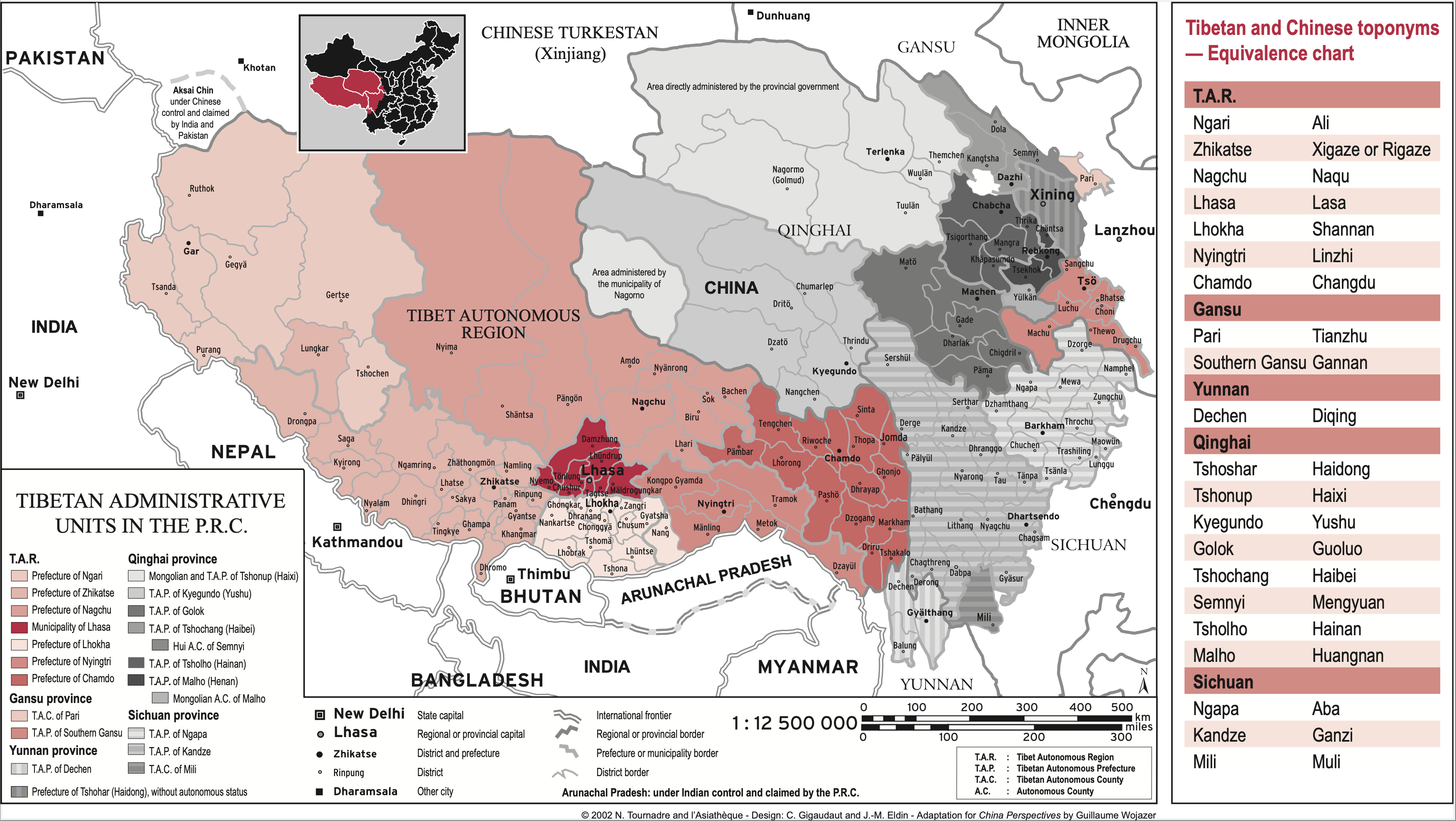
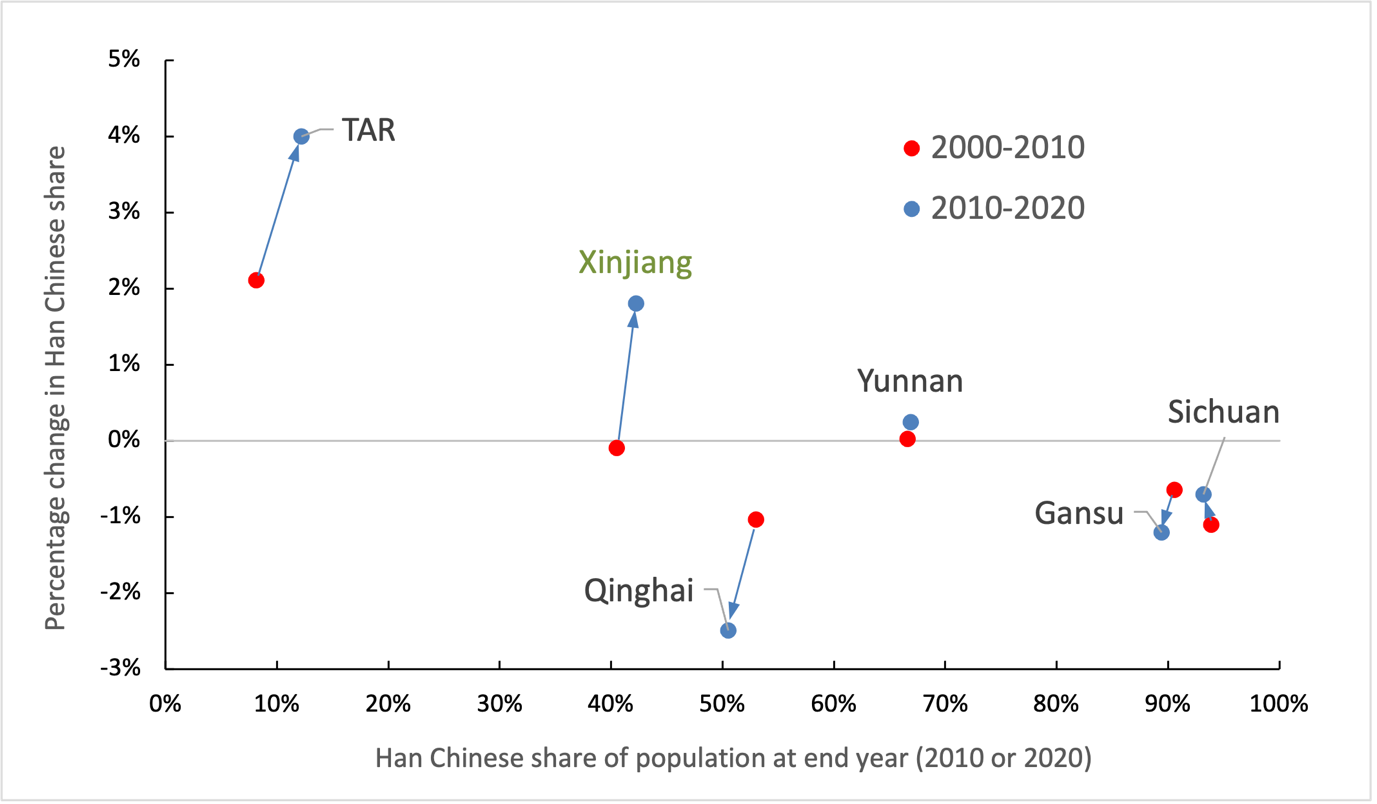
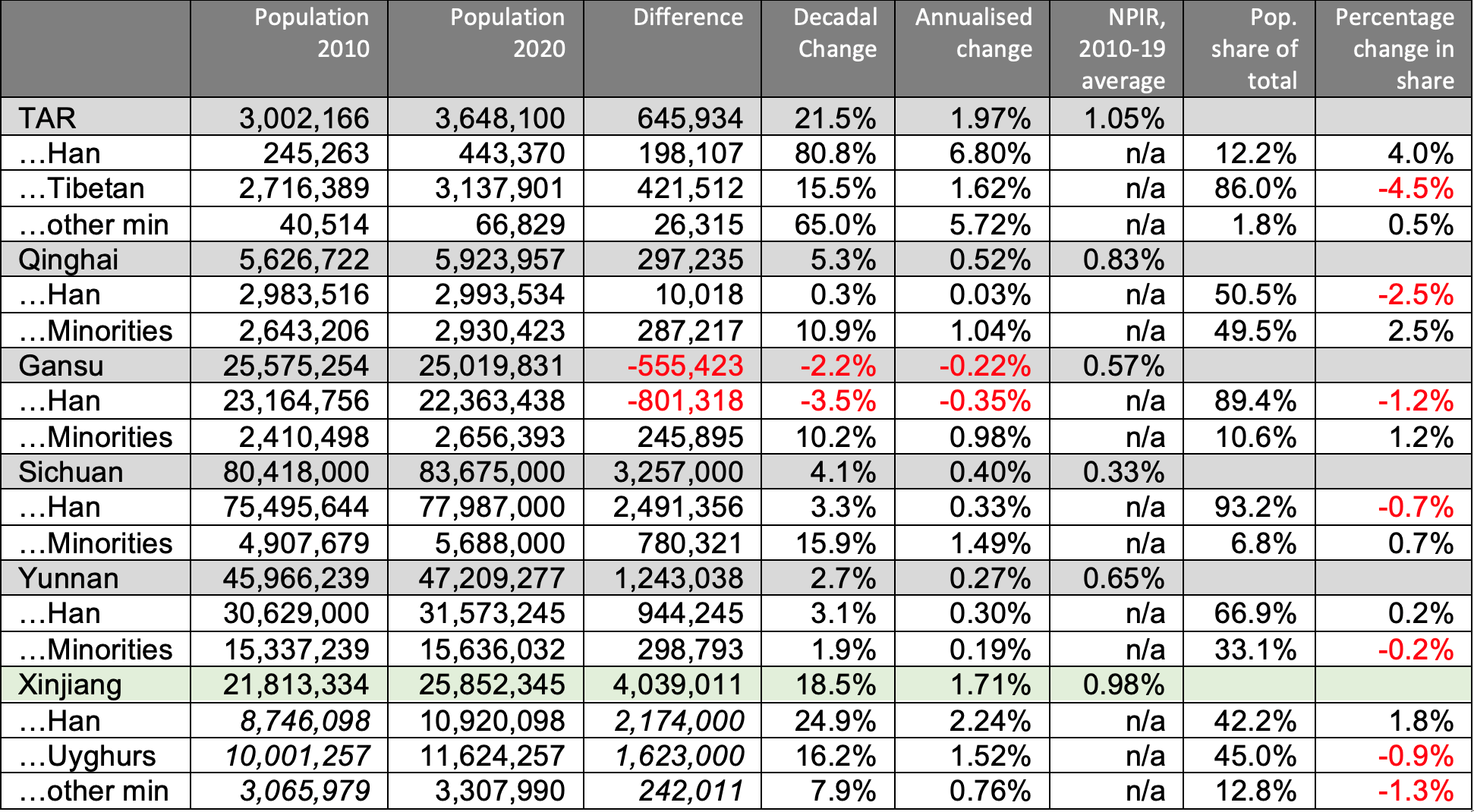
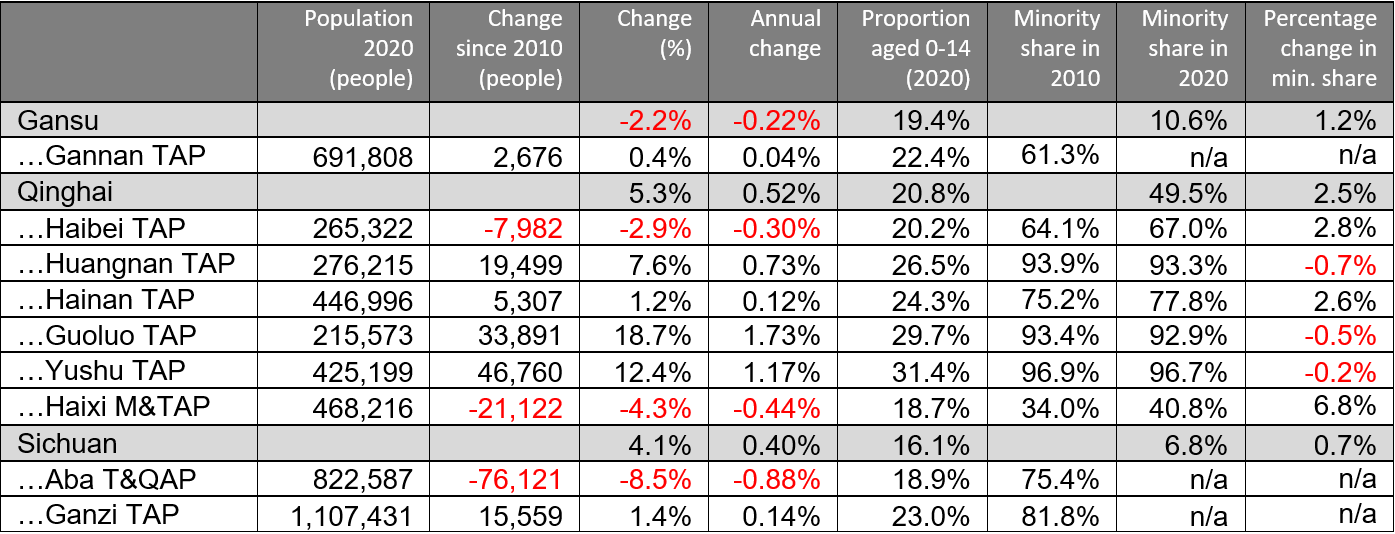

No comments:
Post a Comment